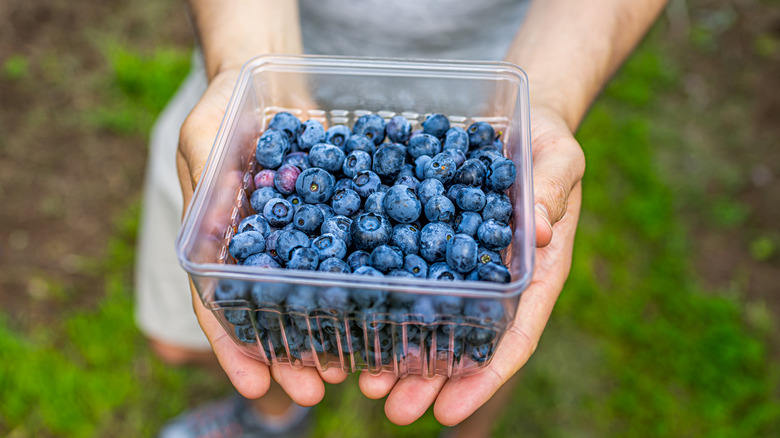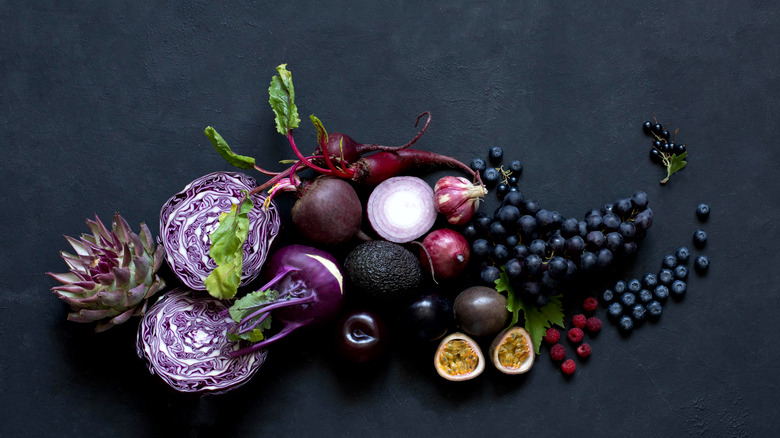The Reason Naturally Blue Foods Are So Rare
While Skittles candy may have coined the phrase "Taste the Rainbow" back in 1994 (via Penn State University), nutritionists have advocated for a diet rich in colorful foods for far longer than that. According to Harvard Health, making sure to sample fruits and vegetables across the whole color spectrum can help protect against chronic diseases, including heart disease and cancer. Those protective health effects are due to the phytonutrients in colorful foods, compounds that give plants their hue as well as their flavors and smells, and also happen to boost the human immune system when consumed. In order to get the broadest protection possible, health experts have suggested trying to include as wide a variety of colors in our diet as possible (via Harvard Health).
If you've ever tried out this method, you may have noticed that some colors are easier to find in nature than others. There's no shortage of yellow in bananas, apples, and bell peppers; red in tomatoes, strawberries and hot chiles; and green in lettuce, kale, cucumbers, and more. But if you've checked your local farmers market for blue foods, you may have come out empty handed. Truly blue fruits and vegetables are exceedingly rare — if not completely impossible to come by.
'Blue' foods are not really blue
What comes to mind when you try to think of a blue fruit or vegetable? Blueberries, surely, and possibly blue potatoes or blue corn. But do these foods really look blue to you?
According to The Kitchn, the pigments responsible for blue hues in food are called anthocyanins. Depending on a plant's life cycle, the anthocyanins present in its fruit will produce different pigments, such as how a tomato starts out green but ripens into red. Anthocyanins make blueberries look blue, eggplants look purple, and "red" onions and cabbage look purple. But while these foods might seem blue-ish, they're not a true blue. In 2013, the Food Network show "Food Detectives" investigated this very topic, running a spectrophotometer, which measures the color wavelengths of objects, over "blue" foods such as bilberries, plums, and, of course, blueberries — but the tool registered those foods as more purple than blue in every case (via YouTube).
So if blue foods don't really exist, why not? According to The Kitchn, one explanation could be the way that plants metabolize sunlight. Because blue light is among the highest energy wavelengths in the light spectrum, truly blue fruits and vegetables would actually reflect sunlight instead of absorbing it to be used to power photosynthesis, leading to a weak and vulnerable plant. So the next time you try to fill your shopping basket with blue foods, you might have to stick to more purplish ones, instead.

